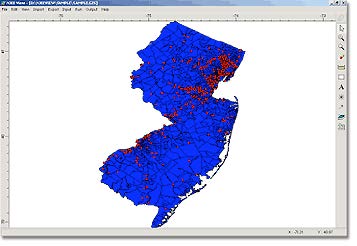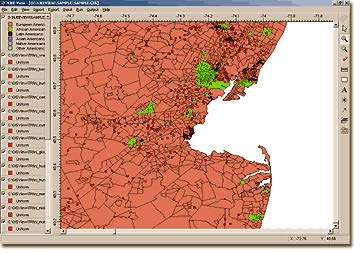New Jersey Department of Environmental Protection
This research began in 2000 and continued until December 17, 2001, when the U.S. Court of Appeals issued a ruling in favor of the State of New Jersey. Lakes Environmental Software was hired, on a sole source basis, to develop unique Environmental Justice solutions. The American 1964 Civil Rights Act – Title VI mandates that all federal fund transfers be suspended from States that discriminate against race or ethnic groups. A lawsuit was brought against the State of New Jersey by a minority group arguing that environmental permits were causing disparate impacts.

A review on previous research in the field indicated that total Hazardous Air Pollutant (HAP) emissions were compared against population counts, stratified by race. It was evident that researchers were ignoring chemical toxicity from each chemical. This ineffective approach would result in unrealistic comparisons such as one gram of the highly toxic dioxin being evaluated against one ton of the less harmful carbon dioxide.

Lakes Environmental and New Jersey’s joint research goals required a system capable of accomplishing both site-specific studies and statewide coverage within a single framework of analysis. This was necessary because many cases were analyzed in the absence of a complaint and could arise for consideration at any location in the state at any time. Therefore, to provide a timely and consistent response to permitting applications, the Department had to make many of the decisions that, in a complaint-driven system, might have been guided by community concerns. These decisions included defining the geographic boundaries of the analytic subunits and determining the type and number of stressors to be considered.
To satisfy these goals, Lakes Environmental constructed a model that evaluated census data and exposure data from various stressors, such as air pollutants and hazardous sites, summarized at the census tract level. These data were combined and analyzed to determine a statewide race-specific ratio. A ratio greater than 1 indicated that the race (sub-population) under consideration may have been experiencing more than the average effect from the stressors, while a ratio less than 1 indicated less than the average statewide effect.


Risk assessment was conducted for thousands of sources within 1,937 census tracts. Reviewers at the New Jersey Department of Environmental Quality accepted that we interpolate results from smaller study areas. They understood the magnitude of the problem we were facing and accepted the small inaccuracy in the system. Subsequently to conducting risk assessment in a scale not previously achieved, we had to test the hypothesis that discrimination was occurring statewide. Simplifications over the tests resulted in equation shown below, which describes the mathematical relationship among the variables evaluated for the environmental equity determination.

One PERs was determined for each of the 6 race or ethnicity census categories. Each census category is considered a sub-population. A PERs can be considered a score whereby 1 means that the subpopulation has exactly the same exposure as the entire population for whatever stressor is being considered.
Where:
PERs = Population Emissions Ratio for sub-population s (ethnicity)
R = Risk
s = number of people in sub-population in census tract
S = number of people in sub-population in state
w = number of people in census tract
W = number of people in state
This approach was so successful that the State of New Jersey has recommended a regulation that imposes the use of our Environmental Justice methodologies and tools for environmental permits across the state.


